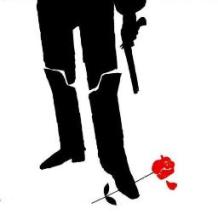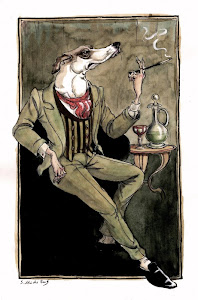
In homage to Movember
By Gieves & Hawkes
3 November, 2009
Gieves & Hawkes are proud to support Movember – prostate cancer awareness month, in which gentlemen are encouraged to cultivate a fine moustache all November long. In homage to this special cause, we are delighted to bring you a brief history of moustaches though the ages.
Moustaches have been sported throughout the ages in a myriad of different styles. Early records show Egyptians did not grow facial hair, considering it unclean, while in Greece they grew beards but not moustaches. Elaborately curled and anointed with costly essences, the beard denoted gravitas and rank.
Under the kingship of Alexander the Great, the hirsute Macedonians went to war with the Persians. During these skirmishes, the Macedonians were grabbed by their beards and many killed. Alexander decreed that henceforth they should all be clean-shaven to avoid disaster in this way.
 The Romans perfected the art of men’s grooming and the barbershop became one of the places to meet, exchange gossip and be pampered in the process. These early spas provided hair-cutting, shaving, manicure and massage services to keep the man about Rome looking fabulous.
The Romans perfected the art of men’s grooming and the barbershop became one of the places to meet, exchange gossip and be pampered in the process. These early spas provided hair-cutting, shaving, manicure and massage services to keep the man about Rome looking fabulous.Then came the Roman emperor Hadrian, who allegedly grew facial hair to conceal imperfections. This started a fashion and suddenly all the Roman nobility followed suit.
As men start to grow facial hair after the onset of puberty, throughout the ages it has been regarded as a sign of virility and manhood. In the British army young men were encouraged to foster the growth of facial hair, culminating in the luxuriant moustaches seen in engravings and sepia pictures of dashing majors and crusty brigadiers. One of the most famous examples being the conscription posters around the time of the First World War, with Lord Kitchener exhorting that “your country needs you”.
Moustaches in some areas of military life were obligatory. The European Hussars traditionally wore long moustaches but not beards. These gentlemen were the apogee of the swash-buckling male — a dashing, conceited amorous figure of whom it was said that men fled from and woman ran towards.

Text ©2009 Gieves and Hawkes





















No comments:
Post a Comment